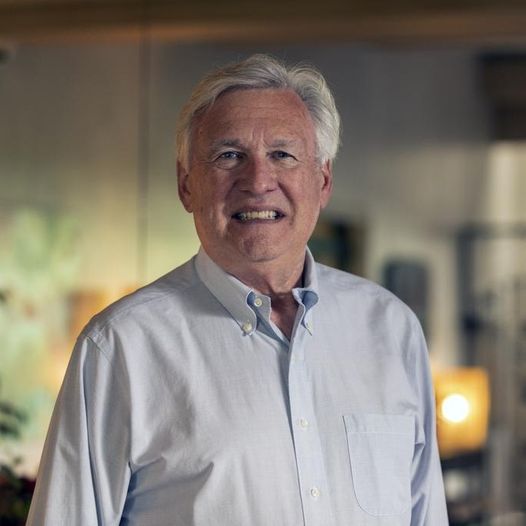
According to Corcoran Pacific Properties’ most recent luxury market report, which was published in July and looks at the first half of the year, “The start of the year saw a market in flux, continuing from the last quarter of 2022, which saw sellers and buyers hesitating in their real estate decisions given geo-political concerns, rising inflation, interest rates and overall uncertainty about the economy.”
Although unit sales were lower than the comparative months in 2022, both single-family and attached home markets have, for the most part, “remained either favorable to the sellers or balanced,” the report noted.
Gregg Antonsen, senior vice president of luxury marketing for Corcoran Pacific Properties, remains “cautiously optimistic, with an emphasis on optimistic,” in his outlook for Hawaii’s luxury real estate market as market trends transition to a “new normal.”
“Hawaii has always held a unique allure and added value for those who wish to understand, respect, and value the people, rich culture, and corresponding lifestyles found only in these spectacular Islands,” he told Pacific Business News.
Data provided by Antonsen — which looks at single-family homes sold for $2 million or higher on Oahu from June 1 to Aug. 31 each year from 2019 through 2023 — show that while the number of sales during that period this year fell below 2021 and 2022 levels it exceeded pre-Covid levels.
- From June 1 to Aug. 31, 2019, there were 49 sales of such properties, while one home sold for $10 million and above. During that period, the median sales price for homes above that $2 million threshold was $2.53 million.
- In 2020, after the onset of the COVID-19 pandemic, there were 41 sales of $2 million and higher during the same three-month period, but none above the $10 million threshold. The median sales price for homes above that $2 million threshold climbed to $3 million.
- In 2021, there were 88 single-family home sales on Oahu above $2 million from June 1 to Aug. 31, and two were $10 million and above. The median sale price of homes above $2 million was $2.7 million.
- During the same period in 2022, there were 109 single-family home sales of $2 million and higher on Oahu and three $10 million and higher. The median sale price of single-family homes in that price range was $2.6 million.
- And in 2023, “you’ll see the downward trend, but it’s still higher than 2019,” Antonsen said. There were 79 sales of single-family homes on Oahu priced above $2 million and no sales above $10 million. The median sale price was nearly $2.8 million.
“If you compare 2023 to 2019, you’ll see that in this specific category, for those specific time frames, we’re actually doing better than we were in 2019,” Antonsen said. “It’s slowing down, but it hasn’t dropped off precipitously. … To me, there’s no bad news here. This is a market seeking a new normal in 2023.”
Here’s what Antonsen — who also watches wealth and investment trends of high net worth individuals, trends that can affect real estate activity — had to say about current luxury market trends, where people are buying luxury homes, and what the year ahead might bring.
What kind of trends are you seeing in the luxury market here in Hawaii? Here’s what’s interesting — and again, by and large, there are always exceptions — but people buying in this high-end market don’t want to buy a project, for the most part. So they prefer something that … [is] up-to-date. If it’s an older home, it’s been renovated, and there are a number of reasons they don’t want to buy a project. They realize, especially with what people went through [during] Covid, sometimes you can’t always get the materials you want, the costs are subject to spikes, and we’re going to have a labor shortage with the Maui [wildfire recovery]. They would prefer to buy what I call a lock-and-leave, which is a condo or a beautiful home that doesn’t become a project. That’s an important signal to sellers. They also like things that are up-to-date when it comes to technology. Smart homes are a big thing — you can control the temperature remotely. [Electric vehicle] charging stations. … This is something they like to have in their own homes if they can, and if it’s there, it’s just another reason to buy. They’re conscious, too — they want to leave as small a carbon footprint as possible, so they’re conscious about cooling the home and how it’s cooled. They want it to be as energy-efficient as possible.
Where are people buying these luxury and ultra-luxury homes? It depends on what they’re after. The Kona Coast of the Big Island has been busy — not as busy as during the pandemic — but Kona Coast. For other people [who] want to get away to a different environment that’s more lush, parts of Kauai certainly hold an attraction. The North Shore of Oahu attracts people [who] don’t want that city feel. They feel they’re in the country on the North Shore. Of course, Maui has its allure as well. What we’ve found in the past, and it will be interesting to see how this unfolds, a lot of foreign purchasers — we’re talking now primarily the Japanese, some Chinese — they, on the other hand, want to be in a metropolitan area, and … that’s why they tend to buy condos, because they’re near the shopping, they’re near the restaurants, they’re near the activity.
What do you see happening in Hawaii’s luxury market in the year ahead? I’m hoping we’ll see a continuation of what we’ve seen volume-wise this year, and hopefully that can build. But I don’t think we’re going to see a large improvement until we’ve tackled inflation and interest rates because, again, at the bottom tier of those high net worth individuals [who have $1 million to $5 million in assets], they’re buying their first second home in many cases, and so sometimes, they like to at least finance part of that. … I’d like to see an uptick in volume, but that’s dependent on these variables — the interest rates and also … geopolitical events, because these groups of people tend to be invested worldwide, and that’s another reason you’re starting to see some of the shift of money and investment.


 Facebook
Facebook
 X
X
 Pinterest
Pinterest
 Copy Link
Copy Link


